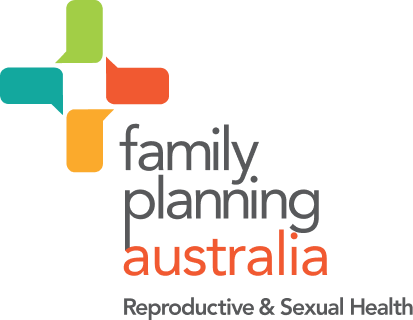General guide to non-directive decision-making counselling
2.
Gipson J, Koenig MA, Hindin MJ. The effects of unintended pregnancy on infant, child, and parental health: A review of the literature. Stud Fam Plann. 2008;39:18-38.
Close
3.
Whitworth M, Dowswell T. Routine pre‐pregnancy health promotion for improving pregnancy outcomes (Cochrane Review). The Cochrane Database of Systematic Reviews. 2009;Oct 7(4):CD007536.
Close
4.
Rowe H, Kirkman M, Hardiman EA, Mallett S, Rosenthal DA. Considering abortion: a 12-month audit of records of women contacting a Pregnancy Advisory Service. MJA. 2009;190(2):69-72.
Close
5.
Taft A, Shankar , Black KI, Mazza D, Hussainy S, Lucke JC. Unintended and unwanted pregnancy in Australia: a cross-sectional, national random telephone survey of prevalence and outcomes. MJA. 2018;209(9):407-8.
Close
6.
Marie Stopes International. Real Choices: Women, contraception and unplanned pregnancy. [Internet]. Marie Stopes International; 2008.
Close
7.
Rowe H, Holton S, Kirkman M, Bayly C, Jordan L, McNamee K, et al. Prevalence and distribution of unintended pregnancy: the Understanding Fertility Management in Australia National Survey. Aust N Z J Public Health. 2016 Apr;40(2):104-9.
Close
11.
Family Planning NSW. Reproductive and Sexual Health in Australia. Ashfield: Family Planning NSW; 2013.
Close
13.
Finer L, Frohwirth LF, Dauphinee LA, Singh S, Moore, AM. Timing of steps and reasons for delays in obtaining abortions in the United States. Contraception. 2006;74:334-44.
Close
14.
Moore A, Frohwith L, Blades N. What women want from abortion counseling in the United States: a qualitative study of abortion patients in 2008. Soc Work Health Care. 2011;50(6):424-42.
Close
17.
Allen R, Goldberg AB. Cervical dilation before first-trimester surgical abortion (<14 weeks’ gestation). Contraception. 2016 Apr;93(4):277-91.
Close
18.
Lohr P, Fjerstad M, DeSilva U, Lyus R. Abortion. BMJ. 2014;348:29-33.
Close
20.
eTG Complete [internet]. Therapeutic Guidelines; 2019. Antibiotic.
Close
22.
Sääv I, Fiala C, Hämäläinen JM, Heikinheimo O, Gemzell-Danielsson K. Medical abortion in lactating women–low levels of mifepristone in breast milk. Acta Obstet Gynecol Scand. 2010 May;89(5):618-22.
Close
25.
Pocius K, Maurer R, Fortin J, Goldberg AB, Bartz D. Early serum human chorionic gonadotropin (hCG) trends after medication abortion. Contraception. 2015 Jun;91(6):503-6.
Close
26.
Shannon C, Brother LP, Philip NM, Winikoff B. Infection after medical abortion: a review of the literature. Contraception. 2004;70(3):183-90.
Close
27.
NPS Medicinewise. Mifepristone (Mifepristone Linepharma) followed by misoprostol (GyMiso) for medical termination of pregnancy of up to 49 days’ gestation. RADAR. 2013.
Close
28.
Goldstone P, Walker C, Hawtin K. Efficacy and safety of mifepristone–buccal misoprostol for early medical abortion in an Australian clinical setting. Australian and New Zealand Journal of Obstetrics and Gynaecology. 2017;57(3).
Close
29.
Marie Stopes Australia. Understanding your options: surgical abortion vs medical abortion [internet]. Marie Stopes Australia; 2016 [updated 2016 Oct 27]. Available from: https://www.mariestopes.org.au/.
Close
30.
Horvath S, Schreiber CA. Unintended pregnancy, induced abortion, and mental health. Current psychiatry reports. 2017;19(11):77.
Close
31.
Biggs M, Upadhyay UD, McCulloch CE, Foster DG. Women’s Mental Health and Well-being 5 Years After Receiving or Being Denied an Abortion: A Prospective, Longitudinal Cohort Study. JAMA Psychiatry. 2017;74(2):169-78.
Close
32.
Rocca C, Kimport K, Roberts SC, Gould H, Neuhaus J, Foster DG. Decision Rightness and Emotional Responses to Abortion in the United States: A Longitudinal Study. PLoS One. 2015;10(7):e0128832.
Close
35.
Bateson D, Stewart M, Goldstone P. Post-abortion contraception. O&G Magazine: Abortion. 2018 Winter;20(2).
Close
